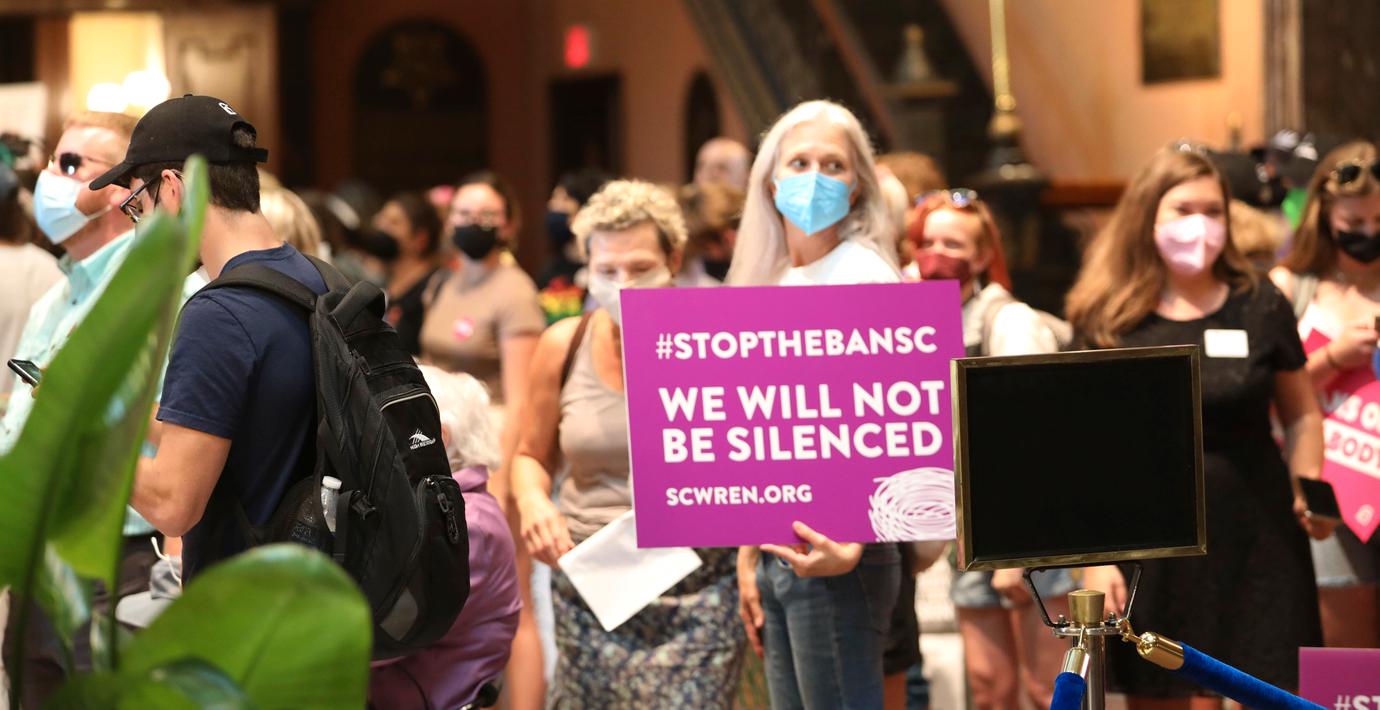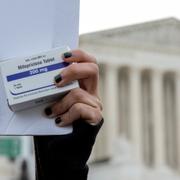
South Carolina näst på tur att skärpa abortlagarna
South Carolinas republikanske guvernör Henry McMaster har undertecknat en lag som förbjuder abort efter att ultraljud kunnat påvisa hjärtaktivitet hos fostret, vanligtvis i sjätte graviditetsveckan.
Lagen är ett stort bakslag för aborträtten i den amerikanska delstaten, rapporterar The Hill. Tidigare har abort varit lagligt till vecka 22, även om restriktioner och andra begränsande faktorer i realiteten gjort det svårt för kvinnor att få möjlighet till abort efter den tolfte veckan.
De flesta vet inte om att de är gravida så tidigt som i sjätte veckan.
bakgrund
Abort i USA
Wikipedia (en)
Abortion is a divisive issue in American politics and culture wars, with widely different abortion laws in U.S. states. Since 1976, the Republican Party has generally sought to restrict abortion access based on the stage of pregnancy or to criminalize abortion, whereas the Democratic Party has generally defended access to abortion and has made contraception easier to obtain. The abortion-rights movement advocates for patient choice and bodily autonomy, while the anti-abortion movement maintains that the fetus has a right to live. Historically framed as a debate between the pro-choice and pro-life labels, most Americans agree with some positions of each side. Support for abortion gradually increased in the U.S. beginning in the early 1970s, and stabilized during the 2010s.The abortion rate has continuously declined from a peak in 1980 of 30 per 1,000 women of childbearing age (15–44) to 11.3 by 2018. In 2018, 78% of abortions were performed at 9 weeks or less gestation, and 92% of abortions were performed at 13 weeks or less gestation. By 2020, medication abortions accounted for more than 50% of all abortions. Almost 25% of women will have had an abortion by age 45, with 20% of 30 year olds having had one. In 2019, 60% of women who had abortions were already mothers, and 50% already had two or more children. Increased access to birth control has been statistically linked to reductions in the abortion rate.Before the Supreme Court of the United States decisions of Roe v. Wade and Doe v. Bolton had decriminalized abortion nationwide in 1973, abortion was already legal in several states; the decision in the former case imposed a federally mandated uniform framework for state legislation on the subject. It also established a minimal period during which abortion is legal, with more or fewer restrictions throughout the pregnancy. That basic framework, modified in Planned Parenthood v. Casey (1992), remained nominally in place, although the effective availability of abortion varied significantly from state to state, as many counties had no abortion providers. Casey held that a law could not place legal restrictions imposing an undue burden for "the purpose or effect of placing a substantial obstacle in the path of a woman seeking an abortion of a nonviable fetus". In December 2021, the FDA legalized telemedicine provision of medication abortion pills with delivery by mail, but many states have laws which restrict this option.
In 2022, Roe and Casey were overturned in Dobbs v. Jackson Women's Health Organization, ending protection of abortion rights by the United States Constitution and allowing individual states to regulate any aspect of abortion not preempted by federal law.As of 2023, California, Michigan, and Vermont are the only U.S. states to have explicit rights to abortion in their state constitutions. Other states have implicit rights to abortion subject to state judicial review, such as Kansas and Montana, or simply protect it via state law such as Colorado. The state constitutions of Alabama, Louisiana, Tennessee, and West Virginia explicitly contain no right to an abortion.
South Carolina
Omni är politiskt obundna och oberoende. Vi strävar efter att ge fler perspektiv på nyheterna. Har du frågor eller synpunkter kring vår rapportering? Kontakta redaktionen



